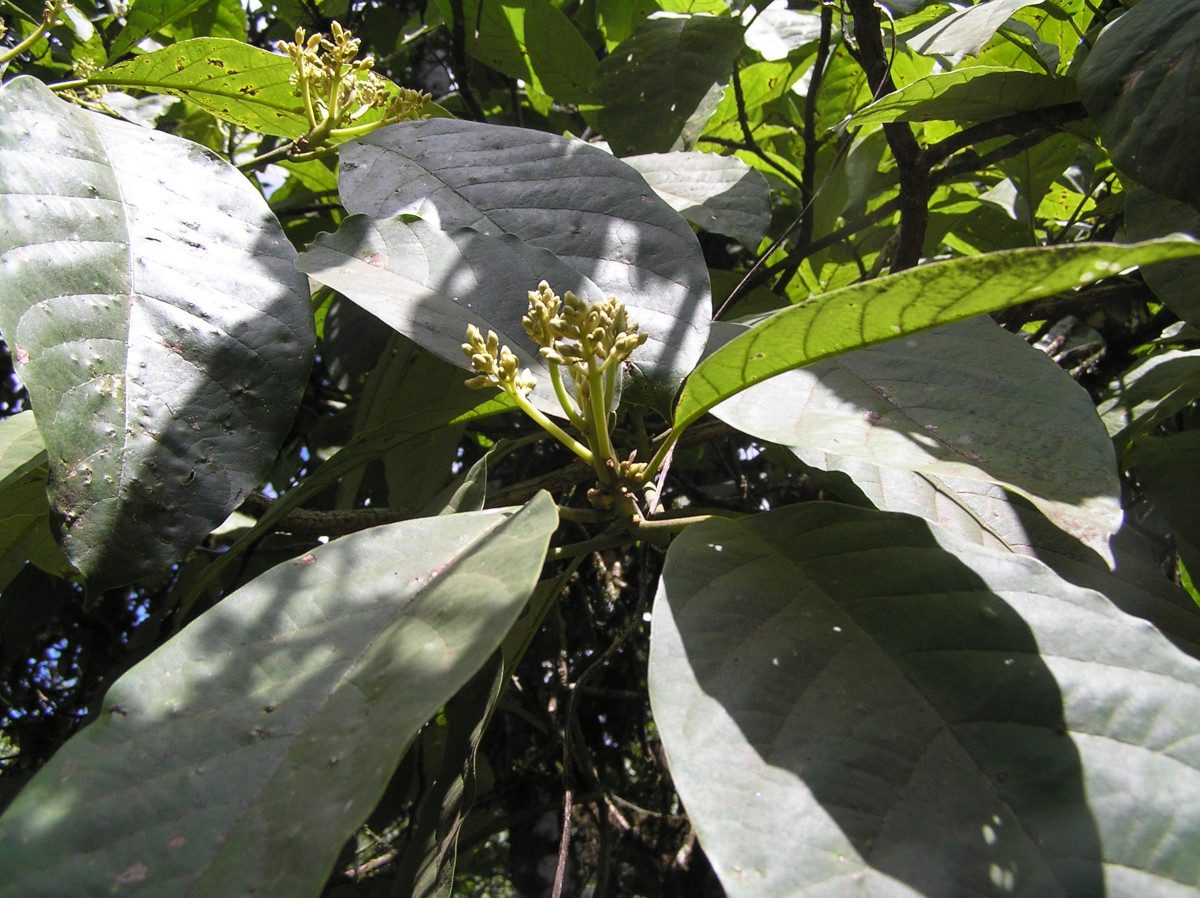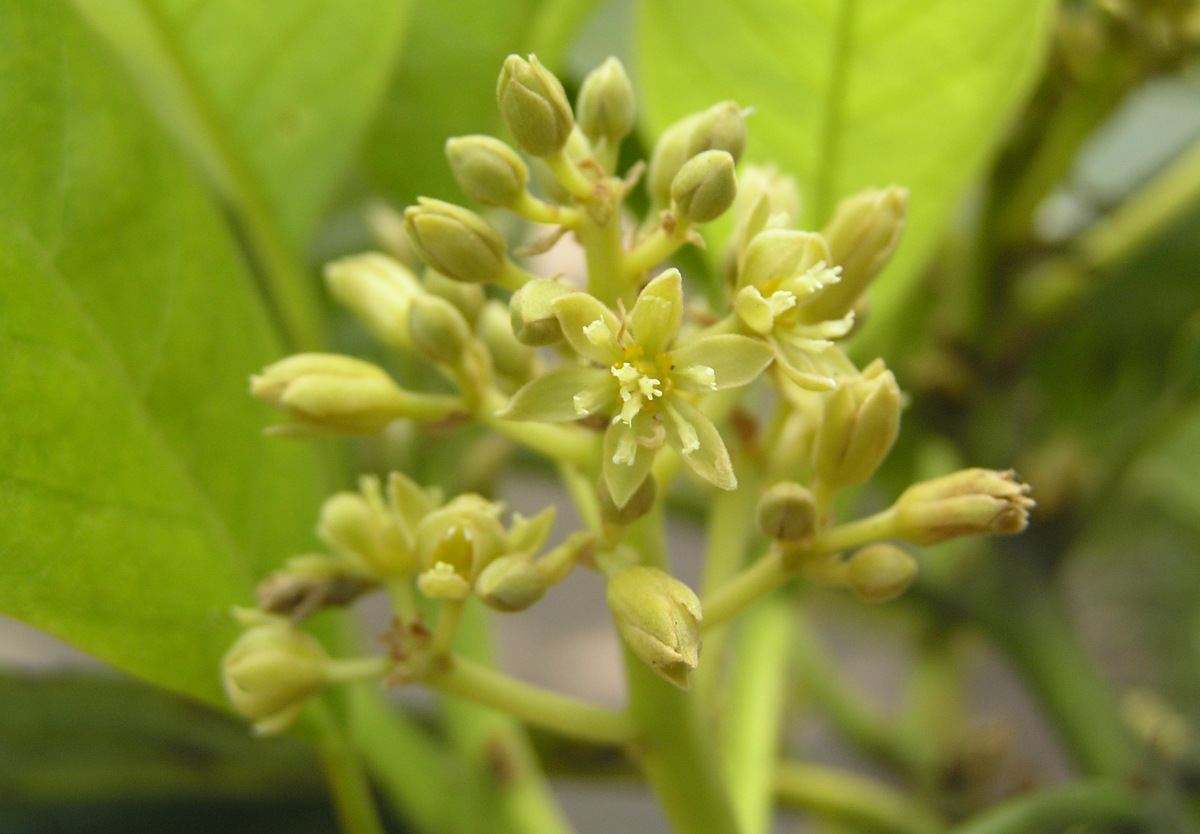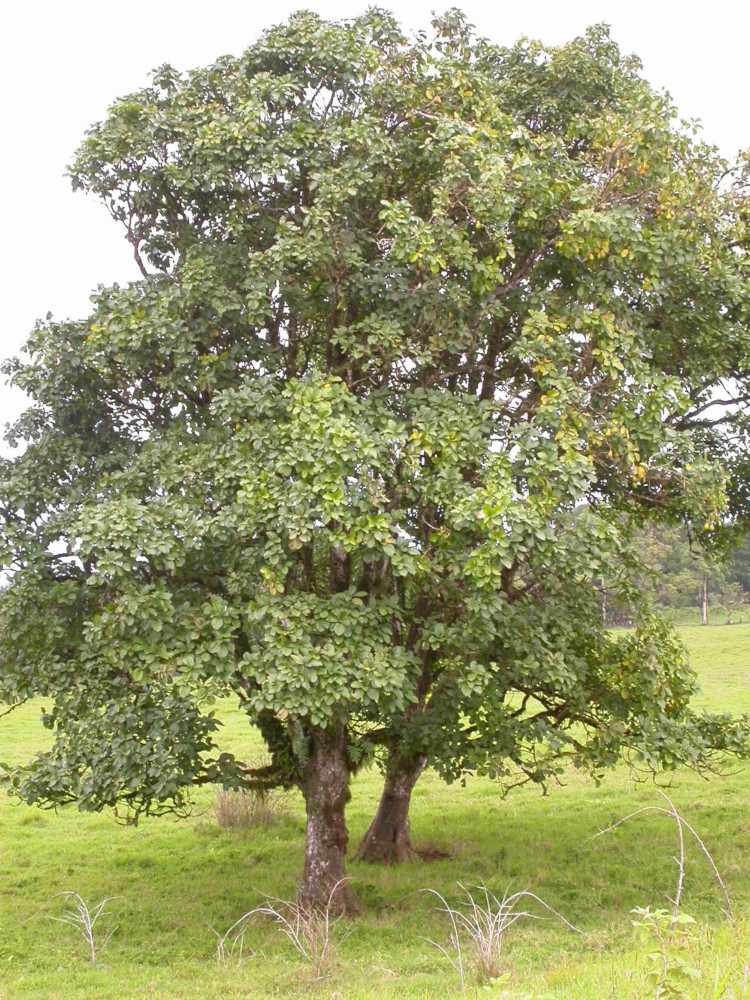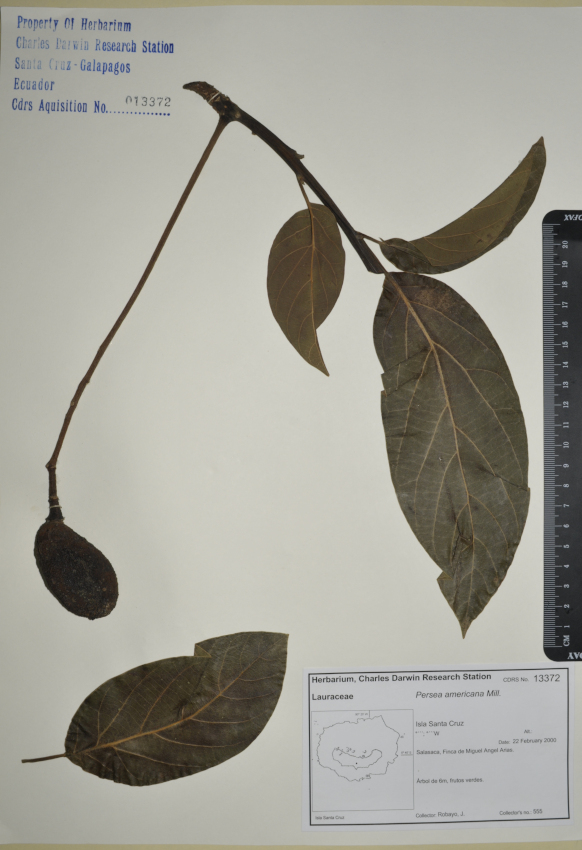Galapagos Species Database
The Galapagos Species Database shares the information about the species from our Natural History Collections.
Persea americana
aguacate, hojas de palta, pagua, avocado, alligator pear, palta, butter fruit






The avocado is a tree that grows up to 30 m high. The fruits are known for their rich meat.
The avocado is a tree up to 30 m high beginning to bear fruit from 5 to 10 years of age. The fruits are known for their rich meat. The seeds are dispersed by cattle and do not last long on the ground.
Domain
Eukaryota
Kingdom
Plantae
Phylum
Magnoliophyta
Class
Magnoliopsida (= Dicotyledoneae)
Order
Laurales
Family
Lauraceae
Genus
Persea
Species
americana
Taxon category: Accepted
Syn.: Laurus persea L.
Taxon origin: Introduced - established
Preference for an altitude zone in Galapagos: Humid zone
Trophic role: Primary producer
Reproductive biology: Avacados begin to bear fruit between 5 to 10 years of age.
Growth form: Trees
Distribution origin: Central America
Economic Use: The avacado is grown for its fruit.
Mode of introduction: Intentional
Introduction Pathway: Intentional
Subpathway: Agriculture/Horticulture
Introduced status: Naturalized
Invasive status: Invasive
Impact in Galapagos: In Galapagos, the tree heavily shades the understory, prohibiting the growth of other native or introduced species, apart from the ferns.
Control methods elsewhere: Seedlings should be pulled manually. Juveniles and adults should be treated with herbicide.
Year of first record: 1875
Map of specimen collection localities or observation records for this species in our collections database.
Distribution: Floreana, Isabela, San cristobal, Santa Cruz, originally from Central America.
- Wiggins, I.L. Porter, D.M. (1971) Flora of the Galapagos Islands Standford University Press, Stanford.
- Schofield, E.K. (1973) Galapagos Flora: The Threat of Introduced Plants. Biol. Conservation 5(1): 48-51.
- Porter, D.M. (1983) Vascular Plants of the Galapagos: Origins and Dispersal. In: Bowman, R.I., Berson, M. & Leviton, A.E. (eds.): Patterns of evolution in Galápagos organisms. Pacific Division, AAAS, San Francisco, California, p. 33-96.
- Lawesson, J.E. (s.a.) Pers. obs. field notes, collections 1985-7.
- Schofield, E.K. (1984) Plants of the Galapagos Islands. Field Guide and Travel Journal. Universe Books, New York, 159 pp.
- Hamann, O. (1984) Changes and threats to the vegetation. In: Perry, R. (ed.) Key Environments: Galapagos. Pergamon Press, Oxford, p. 115-131.
- Chavez, J. (1993) Diagnostico de la Agricultura y la Ganader¡a en la Provincia de Galapagos. Tesis.
- Clavijo, P. Valdebenito, H. & Hurtado, F. (1991) Plantas introducidas en las areas urbanas de las islas Galapagos. Typescript reports in files of Botany Dept.
- Lundh, J.P. (1995) Some additional information and comments on the Annotated Check list of Vascular Plants of the Galapagos Islands by Lawesson, Adsersen and Bentley. Charles Darwin Research Station, unpublished.
- Prado Erazo, G.E. (1986) Informe preliminar, Censo de especies arboreas introducidas en la zona agricola de la isla Santa Cruz. Charles Darwin Research Station, unpublished, typescript CDF library
- Jaramillo, P. (1998) Distribución Espacial de la Vegetación Vascular y Dispersión de Especies Introducidas dentro del Parque Nacional Galápagos. Tesis de Doctorado en Biología, Universidad Central del Ecuador. Especialización ECOLOGIA DE POBLACIONES.
- Jørgensen, P.M. León-Yánez, S. (eds.) (1999) Catalogue of the Vascular Plants of Ecuador. Monographs in Systematic Botany from the Missouri Botanical Garden 75. Missouri Botanical Garden Press, St. Louis, 1181 pp.
- Wolf, T. (1879) Ein Besuch der Galapagos-Inseln. Samml. Vorträgen 1(9/10): 196-304.
- Tropicos.org. (2017) Database of Missouri Botanical Garden. Tropicos.org. Missouri Botanical Garden. 06 Oct 2017 <http://www.tropicos.org
- Royal Botanic Gardens, Kew Missouri Botanical Garden (eds.) (2013) The Plant List, Version 1.1. Published on the Internet; http://www.theplantlist.org/ (accessed 1st January).
- Quintana, M.C. (2010) Wild plants in the dry valleys around Quito-Ecuador. Publicaciones del Herbario QCA, PUCE. Quito-Ecuador, 266 pp.
- Prado Erazo, G.E. (1988) Census of introduced of tree species in the Agricultural zone of Santa Cruz Island Annual Report 1986-1987; unpublished typescript, CDF Library
- Guézou, A. Trueman, M., Buddenhagen, E., Chamorro, S., Guerrero, A.M., Pozo, P., Atkinson, R. (2010) An extensive Alien Plan Inventory from the Inhabited Areas of Galapagos Plos One/ www.plosone.org. Volume 5/ Issue 4/e10276
- Lawesson, J.E. (1987) Plantas exóticas en las Islas Galápagos, un resumen. Memorias. Taller sobre investigación Botánica y manejo en Galápagos. Pg. 17-23.
- Rosenberg, D. (1987) Impacto de los herbívoros introducidos sobre el Pacha y de Galápagos (Laterallus spilonotus) Memorias. Investigación Botánica y Manejo en Galápagos. Pg.188-198
- Lawesson, J.E. Ortiz, L. (1987) Plantas Introducidas en las Islas Galápagos Memorias. Investigación Botánica y Manejo en Galápagos. Pg.224-235
- Cayot, L. J. (1987) Ecology of Giant Tortoise (Geochelone elephantopus)in the Galápagos Islands. Submitted in partial fulfillment of the requirements for the degree of Doctor of Philosophy in Biology in the Graduate School of Syracuse University.


Dispersal propagule: Fruit
Seeds are often dispersed via ingestion by livestock.